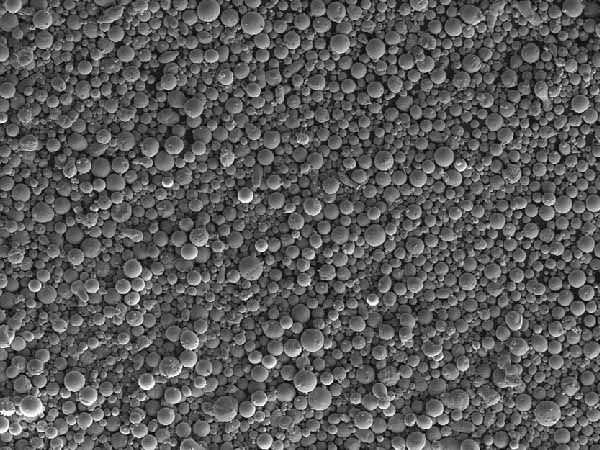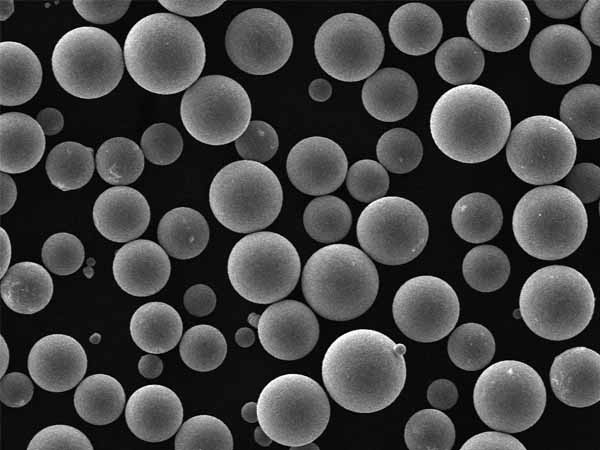Multimaterial-Strukturen stellen den neuesten Stand der Technik dar, indem sie verschiedene Materialien kombinieren, um Komponenten zu schaffen, die von den einzigartigen Eigenschaften der einzelnen Materialien profitieren. Mit diesem Ansatz können Ingenieure und Designer die mechanischen, thermischen und ästhetischen Eigenschaften eines Produkts maßschneidern, was zu bedeutenden Fortschritten in Branchen wie der Luft- und Raumfahrt, der Automobilindustrie und der Unterhaltungselektronik führt.
In diesem Artikel tauchen wir tief in die Welt der Multimaterialstrukturen ein. Wir erforschen die verschiedenen Arten der verwendeten Materialien, ihre Zusammensetzung, Eigenschaften und Anwendungen. Außerdem vergleichen wir verschiedene Multimaterialstrukturen, analysieren ihre Vorteile und Grenzen und geben einen Einblick in die Zukunft dieses faszinierenden Bereichs.
Überblick über Multi-Material-Strukturen
Multi-Material-Strukturen sind ein innovativer Ansatz, der die Integration von zwei oder mehr Materialien in einem einzigen Bauteil vorsieht. Dieses Konzept nutzt die Stärken der einzelnen Werkstoffe und überwindet die Einschränkungen, die bei der Verwendung nur eines einzigen Werkstoffs auftreten könnten.
In der Automobilindustrie beispielsweise kann die Kombination von Metallen wie Aluminium mit Polymeren zu einer leichten und gleichzeitig stabilen Struktur führen, die den Kraftstoffverbrauch und die Sicherheit erhöht. In der Luft- und Raumfahrt können durch die Integration von Kohlenstofffasern und Titan Bauteile hergestellt werden, die sowohl extrem stabil als auch leicht sind, was für Hochleistungsflugzeuge entscheidend ist.
Die wichtigsten Vorteile von Multi-Material-Strukturen
- Verbesserte Leistung: Durch die Kombination von Materialien lassen sich bessere mechanische und thermische Eigenschaften erzielen.
- Gewichtsreduzierung: Multi-Material-Strukturen führen oft zu leichteren Bauteilen ohne Einbußen bei der Festigkeit.
- Kosteneffizienz: Die Verwendung billigerer Materialien in weniger kritischen Bereichen kann die Gesamtkosten senken.
- Flexibilität bei der Gestaltung: Ermöglicht innovative Konstruktionen, die mit Komponenten aus einem einzigen Material nicht möglich wären.
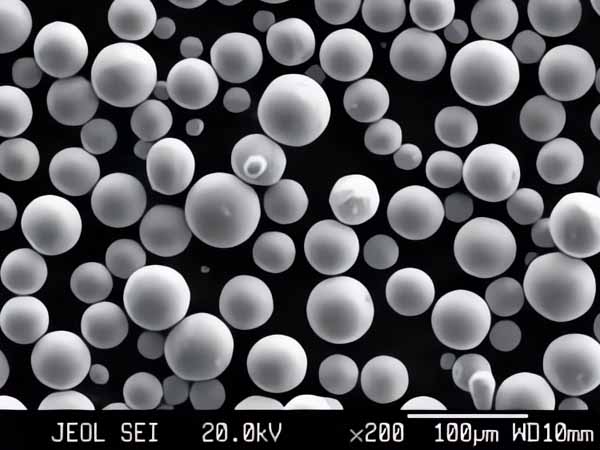
Zusammensetzung der Multi-Material-Strukturen
Die Zusammensetzung von Multimaterialstrukturen ist je nach Anwendung und gewünschten Eigenschaften sehr unterschiedlich. In der Regel bestehen diese Strukturen aus einer Kombination von Metallen, Polymeren, Keramiken und Verbundwerkstoffen.
Schlüsselmaterialien für Multi-Material-Strukturen
| Material | Typ | Zusammensetzung | Eigenschaften | Anwendungen |
|---|---|---|---|---|
| Aluminium-Legierungen | Metall | Al + Mg, Si, Cu | Leicht, korrosionsbeständig, dehnbar | Automobilindustrie, Luft- und Raumfahrt |
| Titan-Legierungen | Metall | Ti + Al, V | Hohe Festigkeit, leicht, korrosionsbeständig | Luft- und Raumfahrt, medizinische Implantate |
| Kohlefaser | Komposit | Kohlenstofffasern + Harz | Äußerst stabil, leicht | Luft- und Raumfahrt, Sportartikel, Automobilindustrie |
| Polymer-Verbundwerkstoffe | Komposit | Polymermatrix + Verstärkung (Glas, Kohlenstoff) | Vielseitig, leicht, stark | Automobilindustrie, Unterhaltungselektronik |
| Keramik | Nicht-Metall | SiC, Al2O3 | Hart, spröde, hohe Temperaturbeständigkeit | Schneidwerkzeuge, Elektronik, Luft- und Raumfahrt |
| Rostfreier Stahl | Metall | Fe + Cr, Ni | Stark, korrosionsbeständig, langlebig | Bauwesen, Automobilindustrie, medizinische Geräte |
| Kupfer-Legierungen | Metall | Cu + Zn, Sn | Ausgezeichnete Leitfähigkeit, korrosionsbeständig | Elektrische Komponenten, Sanitäranlagen |
| Nickel-Legierungen | Metall | Ni + Cr, Mo, Fe | Hohe Temperaturbeständigkeit, korrosionsbeständig | Luft- und Raumfahrt, chemische Verarbeitung |
| Glasfaser | Komposit | Glasfasern + Polymer | Stark, isolierend, leicht | Bauwesen, Automobilindustrie, Schifffahrt |
| Magnesium-Legierungen | Metall | Mg + Al, Zn | Extrem leicht, gut bearbeitbar | Automobilindustrie, Luft- und Raumfahrt, Elektronik |
Eigenschaften und Merkmale von Multi-Material-Strukturen
Die Eigenschaften von Multimaterialstrukturen hängen in hohem Maße von den verwendeten Materialien und deren Kombination ab. Im Folgenden sind einige wichtige Merkmale aufgeführt, die zu berücksichtigen sind.
Hauptmerkmale von Multi-Material-Strukturen
| Eigentum | Beschreibung | Beeinflussende Faktoren |
|---|---|---|
| Mechanische Festigkeit | Die Fähigkeit, Kräften standzuhalten, ohne zu brechen oder sich zu verformen. | Materialzusammensetzung, Klebetechniken und Strukturdesign |
| Wärmeleitfähigkeit | Die Fähigkeit, Wärme effizient zu leiten. | Verwendete Materialien, Schnittstellen zwischen Materialien |
| Korrosionsbeständigkeit | Die Fähigkeit, in rauen Umgebungen dem Abbau zu widerstehen. | Materialauswahl, Schutzbeschichtungen |
| Gewicht | Die Masse der Struktur, die für Anwendungen, bei denen eine Gewichtsreduzierung wichtig ist, entscheidend ist. | Materialdichte, Design |
| Ermüdungswiderstand | Die Fähigkeit, wiederholten Be- und Entlastungszyklen standzuhalten, ohne zu versagen. | Materialauswahl, Qualität der Verklebung |
| Schlagzähigkeit | Die Fähigkeit, Energie bei plötzlichen Stößen zu absorbieren und abzubauen. | Materialzähigkeit, Verbundschichten |
| Ästhetische Anziehungskraft | Die visuellen und taktilen Qualitäten der Struktur, die die Präferenz der Verbraucher beeinflussen können. | Oberflächengüte, Materialkombinationen |
| Elektrische Leitfähigkeit | Die Fähigkeit, Elektrizität zu leiten, wichtig für elektronische Anwendungen. | Art der verwendeten Metalle und Verbundstoffe |
Arten von Multi-Material-Strukturen
Es gibt verschiedene Arten von Multimaterial-Strukturen, die jeweils für spezifische Anforderungen in verschiedenen Branchen entwickelt wurden. Einige der gängigsten Typen sind:
Hybride Metall-Verbund-Strukturen
Bei diesen Strukturen werden Metalle wie Aluminium oder Stahl mit Verbundwerkstoffen wie Kohlefaser kombiniert. Das Ergebnis ist ein Bauteil, das von der Festigkeit der Metalle und dem geringen Gewicht der Verbundwerkstoffe profitiert. Sie werden häufig in der Automobil- und Luft- und Raumfahrtindustrie eingesetzt.
Metall-Polymer-Strukturen
Bei diesem Typ werden Metalle wie Aluminium oder Magnesium mit Polymeren kombiniert, um leichte und korrosionsbeständige Bauteile zu schaffen. Diese Strukturen werden häufig in der Unterhaltungselektronik und im Automobilbau eingesetzt.
Multi-Metall-Strukturen
Bei Multi-Metall-Strukturen werden verschiedene Metalle, wie Aluminium und Stahl oder Kupfer und Nickel, miteinander verbunden. Diese Art von Struktur ist besonders vorteilhaft für Anwendungen, die eine Kombination aus hoher Festigkeit und Wärmeleitfähigkeit erfordern.
Keramik-Metall-Strukturen
Keramik-Metall-Strukturen kombinieren die Härte und Hochtemperaturbeständigkeit von Keramiken mit der Zähigkeit von Metallen. Sie werden in Schneidwerkzeugen, Komponenten für die Luft- und Raumfahrt und in der Elektronik eingesetzt.
3D-gedruckte Multi-Material-Strukturen
Die Fortschritte im 3D-Druck ermöglichen die Herstellung komplexer Multimaterialstrukturen mit präziser Steuerung der Materialverteilung. Diese Technologie revolutioniert Branchen wie medizinische Implantate, Luft- und Raumfahrt und den Prototypenbau.
-
 Ti6242 Titanlegierungspulver
Ti6242 Titanlegierungspulver -
 Pulver aus Nickellegierung Inconel 713LC
Pulver aus Nickellegierung Inconel 713LC -
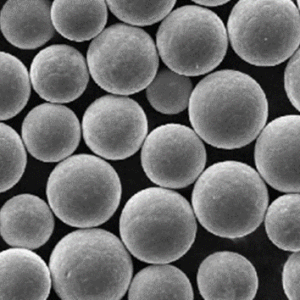 Ti811 Titanlegierungspulver
Ti811 Titanlegierungspulver -
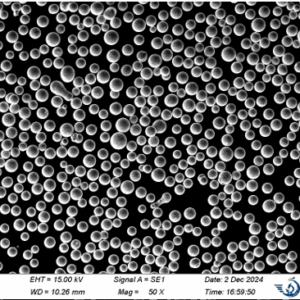 CM247LC Pulver | Nickellegierungspulver
CM247LC Pulver | Nickellegierungspulver -
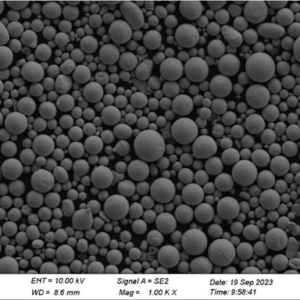 0# Reines Nickelpulver
0# Reines Nickelpulver -
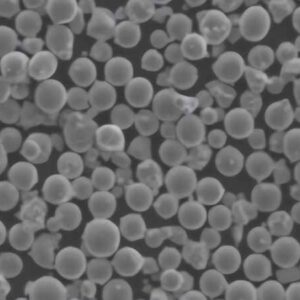 Pulver aus NiCoCrAlY-Legierungen
Pulver aus NiCoCrAlY-Legierungen -
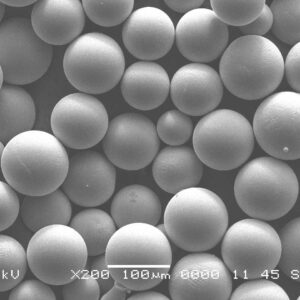 Rene 142 Legierung-Rene Pulver
Rene 142 Legierung-Rene Pulver -
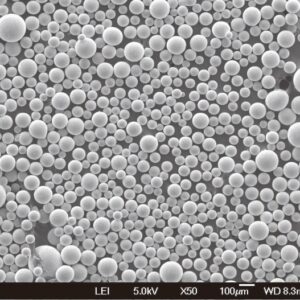 Haynes 25 Haynes-Pulver
Haynes 25 Haynes-Pulver -
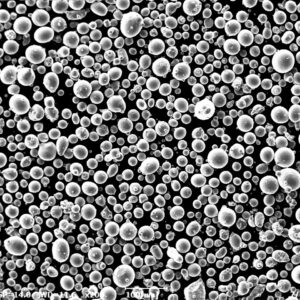 Bestes Hastelloy C-22-Pulver-Hochtemperaturlegierungspulver für den 3D-Druck
Bestes Hastelloy C-22-Pulver-Hochtemperaturlegierungspulver für den 3D-Druck
Anwendungen von Multi-Material-Strukturen
Multi-Material-Strukturen haben eine breite Palette von Anwendungen in verschiedenen Branchen. Nachstehend finden Sie eine Tabelle mit einigen wichtigen Anwendungen.
Anwendungen von Multi-Material-Strukturen
| Industrie | Anmeldung | Verwendete Materialien | Vorteile |
|---|---|---|---|
| Automobilindustrie | Karosserieteile, Fahrgestellteile, Motorteile | Aluminium, Kohlefaser, Polymere | Gewichtsreduzierung, verbesserte Kraftstoffeffizienz, Sicherheit |
| Luft- und Raumfahrt | Rumpfkomponenten, Turbinenschaufeln, Fahrwerk | Titanlegierungen, Kohlenstofffasern, Keramiken | Festigkeits-Gewichts-Verhältnis, Hochtemperaturbeständigkeit |
| Unterhaltungselektronik | Smartphones, Laptops, tragbare Geräte | Magnesiumlegierungen, Polymere, Glasfasern | Leichtigkeit, Haltbarkeit, Ästhetik |
| Medizinische Geräte | Implantate, chirurgische Instrumente | Titan, rostfreier Stahl, Polymere | Biokompatibilität, Festigkeit, Korrosionsbeständigkeit |
| Bauwesen | Bauelemente, Fassadenplatten, Dämmstoffe | Stahl, Glasfaser, Polymere | Festigkeit, Haltbarkeit, Wärmedämmung |
| Marine | Rumpfkomponenten, Propeller, Deckstrukturen | Aluminium, rostfreier Stahl, Verbundwerkstoffe | Korrosionsbeständigkeit, geringes Gewicht, Festigkeit |
| Energie | Windturbinenblätter, Rahmen für Solarmodule, Komponenten für Pipelines | Verbundwerkstoffe, rostfreier Stahl, Keramiken | Langlebigkeit, Widerstandsfähigkeit gegen Umwelteinflüsse |
| Sportgeräte | Fahrradrahmen, Golfschläger, Helme | Kohlefaser, Aluminium, Polymere | Geringes Gewicht, hohe Leistung, Langlebigkeit |
| Chemische Verarbeitung | Reaktoren, Rohrleitungen, Ventile | Nickellegierungen, Keramiken, Edelstahl | Korrosionsbeständigkeit, Hochtemperaturfähigkeit |
| Verteidigung | Panzerungen, Raketenkomponenten, Strukturteile | Titanlegierungen, Verbundwerkstoffe, Keramiken | Ballistischer Schutz, leicht, hohe Festigkeit |
Spezifikationen, Größen, Güteklassen und Normen
Bei der Auswahl von Multimaterialkonstruktionen ist es wichtig, die geltenden Spezifikationen, Größen, Güteklassen und Normen zu berücksichtigen. Nachstehend finden Sie eine Tabelle, in der einige der wichtigsten Aspekte zusammengefasst sind.
Spezifikationen, Größen, Güteklassen und Normen für Multi-Material-Strukturen
| Material | Spezifikation | Verfügbare Größen | Klassen | Normen |
|---|---|---|---|---|
| Aluminium-Legierungen | ASTM B209, EN AW-2024, EN AW-7075 | Bleche, Platten, Strangpressprofile, Rohre | 2024, 7075, 6061 | ISO 9001, ASTM B211 |
| Titan-Legierungen | ASTM B265, Ti-6Al-4V | Bleche, Stangen, Schmiedestücke | Ti-6Al-4V, Ti-6Al-4V ELI | AMS 4928, ASTM F136 |
| Kohlefaser | ASTM D3039, ISO 14129 | Walzen, Prepregs, Platten | T300, T700, M55J | ASTM D7264, ISO 13019 |
| Polymer-Verbundwerkstoffe | ASTM D5956, ISO 14693 | Bleche, Stäbe, Sonderformen | SMC, BMC, CFK | ASTM D5766, ISO 75-2 |
| Keramik | ASTM C1161, ISO 6872 | Individuelle Formen, Platten, Stäbe | Al2O3, SiC, ZrO2 | ISO 6872, ASTM C1161 |
| Rostfreier Stahl | ASTM A240, ISO 15510 | Bleche, Platten, Rohre, Stangen | 304, 316, 17-4PH | ASME SA240, ASTM A312 |
| Kupfer-Legierungen | ASTM B281, ASTM B622 | Rohre, Platten, Stangen | C11000, C70600 | ASTM B134, ISO 281 |
| Nickel-Legierungen | ASTM B443, ASTM B564 | Stäbe, Platten, Bleche | Inconel 625, Monel 400 | ASTM B444, ISO 6265 |
| Glasfaser | ASTM D3808, ISO 13019 | Bleche, Stangen, Gewebe | E-Glas, S-Glas | ASTM D3039, ISO 9001 |
| Magnesium-Legierungen | ASTM B90, AMS 4375 | Bleche, Stangen, Strangpressprofile | AZ31B, ZK60 | ASTM B107, ISO 6892 |
Anbieter und Preisgestaltung von Multi-Material-Strukturen
Die Suche nach zuverlässigen Lieferanten und die Kenntnis der Preise für Konstruktionen aus mehreren Materialien sind entscheidend für fundierte Entscheidungen. Hier finden Sie einen Überblick über namhafte Lieferanten und typische Preise für verschiedene Materialien.
Lieferanten und Preisgestaltung für Multi-Material-Strukturen
| Material | Anbieter | Typische Preisspanne | Beschreibung |
|---|---|---|---|
| Aluminium-Legierungen | Kaiser Aluminium, Constellium | $2 - $6 pro Pfund | Führender Anbieter von Aluminiumprodukten |
| Titan-Legierungen | Timet, VSMPO-Avisma | $20 - $50 pro Pfund | Großer Hersteller von Titanlegierungen |
| Kohlefaser | Hexcel, Toray | $30 - $80 pro Pfund | Die wichtigsten Hersteller von Kohlenstofffasern |
| Polymer-Verbundwerkstoffe | Owens Corning, SGL Carbon | $10 - $50 pro Pfund | Anbieter von verschiedenen Verbundwerkstoffen |
| Keramik | Saint-Gobain, Kyocera | $15 - $100 pro Pfund | Renommierte Lieferanten von Keramikmaterialien |
| Rostfreier Stahl | Outokumpu, Aperam | $3 - $10 pro Pfund | Führende Anbieter von rostfreiem Stahl |
| Kupfer-Legierungen | Wieland, Mueller Industries | $4 - $12 pro Pfund | Führende Anbieter von Kupferlegierungen |
| Nickel-Legierungen | Haynes International, Sondermetalle | $50 - $150 pro Pfund | Spezialisierte Anbieter von Nickellegierungen |
| Glasfaser | Owens Corning, Jushi-Gruppe | $5 - $15 pro Pfund | Wichtige Lieferanten von Glasfasermaterialien |
| Magnesium-Legierungen | Magnesium Elektron, UACJ | $8 - $25 pro Pfund | Hauptlieferanten von Magnesiumlegierungen |
Vorteile und Beschränkungen von Multi-Material-Strukturen
Multimaterial-Strukturen bieten zahlreiche Vorteile, haben aber auch ihre Grenzen. Der folgende Vergleich soll helfen, ihre Vorteile und möglichen Nachteile zu verstehen.
Vorteile und Grenzen von Multi-Material-Strukturen
| Aspekt | Vorteile | Beschränkungen |
|---|---|---|
| Verhältnis Stärke/Gewicht | Kombiniert Materialien für optimale Leistung, erhöht die Festigkeit und reduziert das Gewicht. | Komplexe Herstellungsverfahren können die Kosten erhöhen. |
| Flexibilität bei der Gestaltung | Ermöglicht innovative Designs und maßgeschneiderte Eigenschaften für spezifische Anwendungen. | Die Integration verschiedener Materialien kann die Konstruktion und Montage erschweren. |
| Kosteneffizienz | Ermöglicht die Verwendung von kostengünstigen Materialien in weniger kritischen Bereichen. | Die anfänglichen Einrichtungskosten für die Multimaterialfertigung können hoch sein. |
| Dauerhaftigkeit | Verbesserte Beständigkeit gegen Verschleiß, Korrosion und andere Umweltfaktoren. | Potenzielle Probleme mit der Materialkompatibilität und der Bindung. |
| Thermische und elektrische Eigenschaften | Bietet maßgeschneiderte thermische und elektrische Eigenschaften durch Kombination von Materialien. | Erfordert eine präzise Kontrolle der Materialschnittstellen, um die gewünschten Eigenschaften zu erzielen. |
| Auswirkungen auf die Umwelt | Potenzial für geringere Umweltauswirkungen durch Leichtbauweise und Effizienz. | Die Verwendung mehrerer Materialien kann das Recycling und die Entsorgung erschweren. |

FAQs
Hier finden Sie einen umfassenden FAQ-Bereich, in dem häufige Fragen zu Multimaterialstrukturen beantwortet werden.
| Frage | Antwort |
|---|---|
| Was sind Multimaterialstrukturen? | Bei Multimaterialstrukturen werden zwei oder mehr Materialien miteinander kombiniert, um ihre individuellen Eigenschaften zu nutzen, was zu einer verbesserten Leistung und Effizienz führt. |
| Was sind die Vorteile der Verwendung von Multimaterialstrukturen? | Sie bieten im Vergleich zu Komponenten aus einem einzigen Material eine bessere Leistung, Gewichtsreduzierung, Kosteneffizienz und Designflexibilität. |
| In welchen Branchen werden Multimaterialstrukturen am häufigsten verwendet? | In Branchen wie der Luft- und Raumfahrt, der Automobilindustrie, der Unterhaltungselektronik, der Medizintechnik und dem Bauwesen werden häufig Multimaterialstrukturen verwendet. |
| Wie wirken sich Multimaterialstrukturen auf die Fertigung aus? | Sie können Herstellungsverfahren verkomplizieren, da sie eine präzise Integration und Verbindung verschiedener Materialien erfordern. |
| Sind Multi-Material-Strukturen teurer als Ein-Material-Strukturen? | Auch wenn sie anfangs teurer sind, können die Vorteile der verbesserten Leistung und der geringeren Lebenszykluskosten die höheren Anfangskosten ausgleichen. |
| Können Multimaterialstrukturen recycelt werden? | Das Recycling kann aufgrund der Kombination von Materialien eine Herausforderung sein, aber die Fortschritte in der Recyclingtechnologie verbessern diesen Aspekt. |
Schlussfolgerung und Zukunftsaussichten
Multimaterial-Strukturen stellen einen bedeutenden Fortschritt in Technik und Design dar. Sie bieten unvergleichliche Vorteile in Bezug auf Leistung, Gewicht und Vielseitigkeit, was sie zu einer bevorzugten Wahl in verschiedenen High-Tech-Branchen macht. Sie stellen jedoch auch Herausforderungen in Bezug auf die Komplexität der Herstellung und die Kosten dar.
Im Zuge des technologischen Fortschritts können wir mit weiteren Innovationen im Bereich der Multimaterial-Design- und Fertigungstechniken rechnen. Neue Technologien wie der fortschrittliche 3D-Druck und neue Verbundwerkstoffe werden wahrscheinlich die Möglichkeiten und Anwendungen von Multimaterialstrukturen verbessern.
Die Zukunft der Multi-Material-Strukturen verspricht noch effizientere, effektivere und nachhaltigere Lösungen für alle Branchen, die weitere Fortschritte in Technik und Design vorantreiben.

